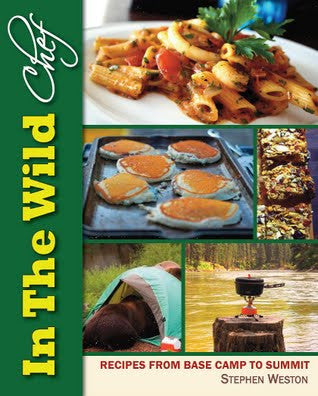7 Tips From Chef Stephen Weston on Eating on the Trail
Sherpa Bill from All Peak asked me to share some of my knowledge on “spicing-up” meals for a mountain camping trip. I’m happy to oblige. Here are 7 tips that I think will take the “blah” out of your next trek.
-
Refrigeration is something you left at home. Thus fresh foods are good for about a day except maybe some vegetables and most fruits. Some fruits and veggies can do well on the trail. Key limes and jalapeno peppers are lightweight and stay fresh.
-
Canned foods sometimes can find a way into your pack if the trip is short and you are craving those canned foods. We like throwing in cans of tuna and chicken and salmon, all of which you can probably find also in a foil pack – which will be a little lighter. We use them in pasta and rice dishes. Skip cans that are in that 15 oz. range and forget about glass, you are just asking for trouble there.
-
Dry foods (pasta, instant rice, soup mixes and drink mixes) are light, take up minimal room inside a pack and offer some excellent alternatives. Check out the Asian section in your supermarket for some lightweight and exotic Thai options.
-
Freeze Dried / Dehydrated foods have improved considerably in taste, texture and appearance in recent years. However you would probably not find any Freeze Dried, MRE or C-Ration in my camp. Been there done that. Forget about it…I am not a fan but you might be. I would use these as more emergency meals. If you are serious about it, get yourself a food dehydrator and recreate some of your favorite meals on the trail.
-
Spices can be crucial to boosting the appeal of backcountry food. Consider bringing your own spice kit which could include pepper, garlic powder or salt, basil, cayenne pepper, lemon pepper, cumin, crushed red pepper, cinnamon or whatever you enjoy from your home kitchen. I wrote about one of my favorite spicy recipes here: http://westonwild.blogspot.com/2014/01/big-dans-spicy-hummus.html
-
Flavored beverages can be taste mighty refreshing after a few days of nothing but water. Powdered drink mixes are a nice mid-trip treat. Gone are the days of sugary Tang. Crystal Light makes single-serve packets that will fill your Nalgene and include energy boost options and a wide variety of fruity combinations.
-
Backpacking cooler- I use those thermal bags you buy on the grocery store that keeps things hot or cold. Sometimes freezer-bagging great white bean chicken chili in a freezer bag (frozen solid) and put it in the thermal bag and store in the middle of your pack can keep it frozen all day long. Most backcountry ventures are in the mountain where temps typically don't get above 70 degrees in during the day and get somewhere south of 35 at night.
You need to be creative and careful how you store your foods considering your audience in the backcountry. Use bear bags or canisters and keep your food at least 200 ft. away from where you sleep. Remember, haul it all out! Climb High and Eat well Outdoors!



Comments on this post (0)